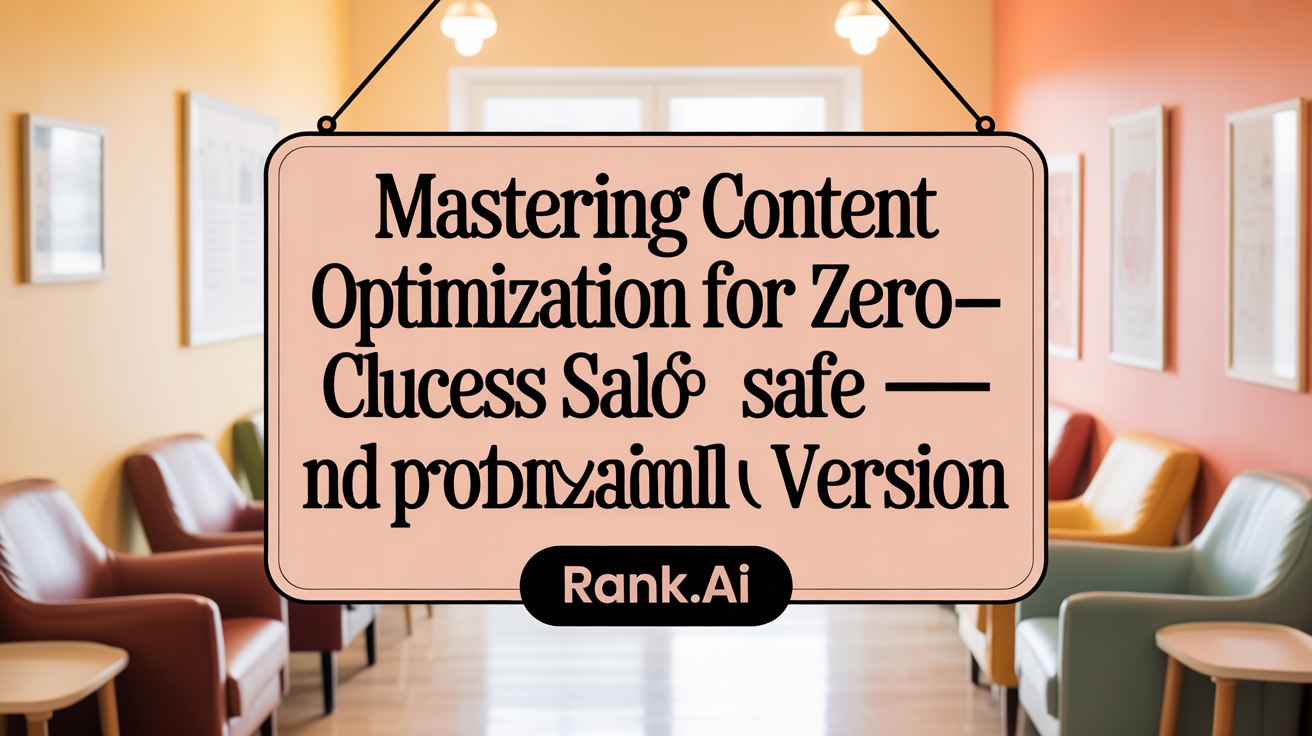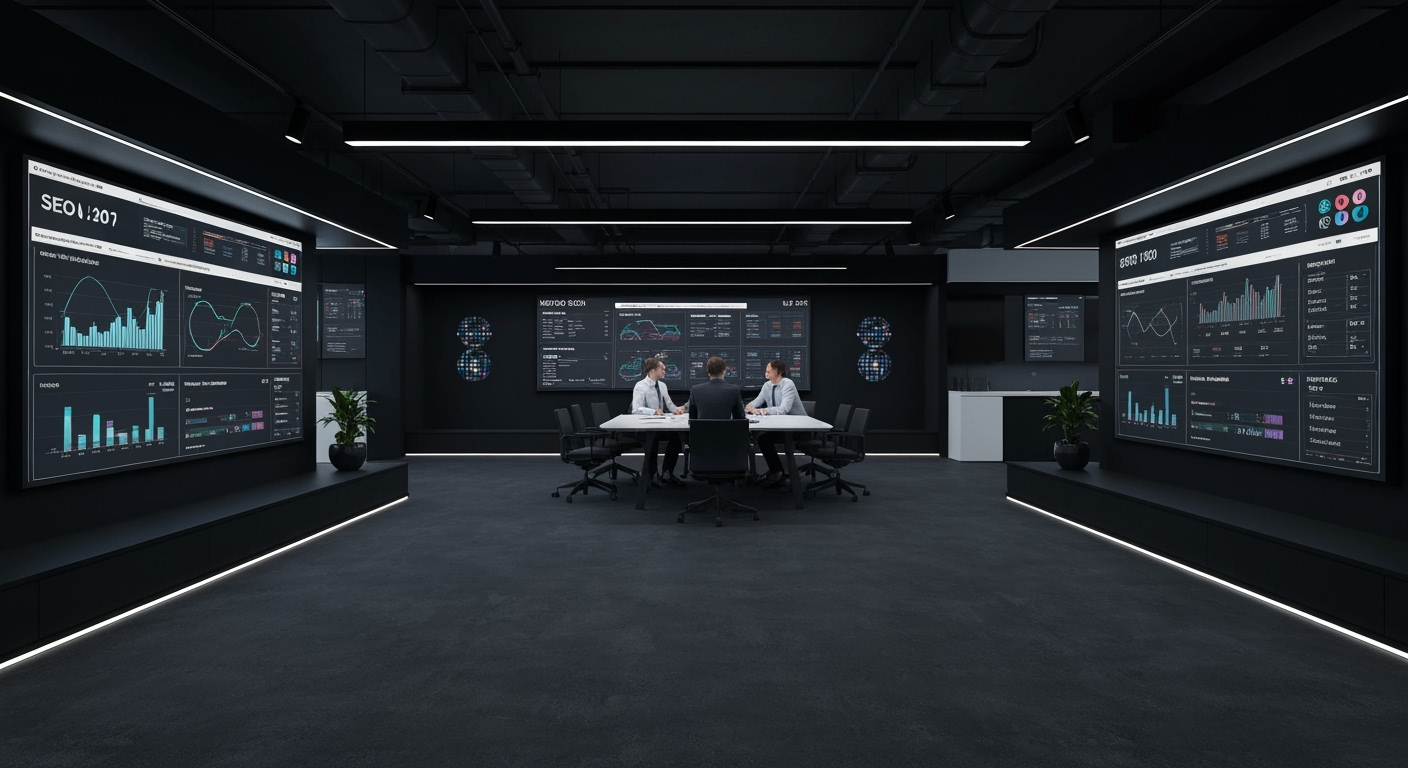Understanding the Zero-Click Search Phenomenon
In the evolving digital landscape, zero-click searches have emerged as a dominant force reshaping how users interact with online information and how businesses approach SEO. This phenomenon occurs when search engines like Google provide answers directly on the search results page, eliminating the need for users to click through to external websites. With over 65% of searches now categorized as zero-click—especially prevalent on mobile devices—the impact on traditional SEO and website traffic is profound. This article explores strategies to optimize for featured snippets and zero-click searches, ensuring that businesses and content creators remain visible, authoritative, and competitive in this new search environment.
Defining Zero-Click Searches and Their SEO Importance

What are zero-click searches and why are they important for SEO?
Zero-click searches happen when users find what they need directly on the search engine results page (SERP) without clicking on any website links. This occurs when Google displays features like featured snippets, knowledge panels, People Also Ask (PAA) boxes, AI Overviews, and local packs that provide instant answers.
In 2024, more than 65% of global Google searches result in zero clicks, with mobile devices seeing over 75%. This trend is driven by advancements such as Google's goal to keep users on the SERP longer and the rise of AI-powered summaries that synthesize information from various sources.
This shift has significant implications for SEO. Traditional strategies focused on ranking in the top positions to earn clicks are now less effective, especially for informational queries. Many industries, including news, e-commerce, health, finance, and B2B, experience reduced organic traffic because users get their answers immediately from SERP features.
To stay visible, brands must optimize for these features. This includes structuring content to appear in featured snippets, using schema markup for better understanding, and continuously updating content to target questions with rich answers. Overall, embracing this change is vital for maintaining online presence, authority, and brand visibility in a landscape where instant answers are now the norm.
Exploring Featured Snippets: What They Are and Their SEO Influence

What are featured snippets and how do they influence SEO?
Featured snippets are summarized, concise blocks of content that appear at the very top of Google's search results, often in a prominent position called 'position zero.' These snippets can take various formats, including paragraphs, lists, tables, and even images, providing users with quick, relevant answers to their questions without needing to visit a website.
By securing a spot in a featured snippet, a website gains increased visibility and authority on the search engine results page (SERP). This prime placement not only enhances brand recognition but also significantly boosts click-through rates (CTR), with some studies showing increases of over 850%. Here's how they influence SEO:
- They position your content above all organic listings, making it the first thing users see.
- They help establish your site as a credible source for specific questions.
- They can lead to increased traffic, especially for long-tail and voice search queries.
To optimize for featured snippets, content creators should focus on answering common questions clearly, using strategic headers, relevant keywords, and structured formats like lists or charts. Incorporating schema markup further helps search engines understand your content, increasing the likelihood of being featured.
Given that nearly 20% of all searches now include featured snippets, leveraging this feature is crucial for improving overall search visibility and attracting qualified visitors. As AI integration and mobile search continue to grow, understanding and optimizing for featured snippets remains a vital part of effective SEO strategies.
Effective Content Optimization Strategies for Zero-Click Searches

How can content be optimized for zero-click searches?
To stand out in a landscape where most search results do not lead to actual clicks, content creators need to focus on precise, question-oriented, and well-structured content. This involves crafting pages that directly answer common user inquiries using clear headings, concise language, and relevant keywords. Incorporating question-based keywords such as 'how,' 'why,' or 'what' increases the likelihood of your content being selected for featured snippets or answer boxes.
Using schema markup and structured data is crucial. These coding techniques help search engines better understand your content, making it easier for them to highlight your information in rich snippets, knowledge panels, and other SERP features. Building comprehensive FAQ sections and ensuring your data is accurate and current also boost chances of being featured.
Local SEO is vital for capturing nearby searches frequently appearing in local packs. Maintaining and optimizing your Google My Business profile, encouraging customer reviews, and developing hyperlocal landing pages ensure visibility for location-based zero-click searches.
Keyword targeting should prioritize terms with high snippet potential. Long-tail keywords, especially those aligned with voice search queries, tend to perform well because they match user intent exactly.
Monitoring your performance using tools like Google Search Console, Semrush, or Ahrefs allows continuous refinement. Track impressions, SERP features appearances, and brand visibility metrics to adjust your content strategy effectively.
Overall, optimizing for zero-click searches means creating valuable, accessible answers that meet user intent immediately, making your content more likely to be featured and visible, even without direct clicks.
Techniques to Secure Featured Snippets and Position Zero

What techniques are effective for optimizing content to appear in featured snippets?
Securing a spot in featured snippets, also known as position zero, requires strategic content optimization. One effective method is to include a clear and prominent heading using question words like 'What is,' 'How,' or 'Why' at the top of your page. This signals to Google that your content is directly relevant to common search queries.
Providing a concise, complete answer within 2-3 sentences right after the heading helps Google quickly extract the main point, increasing your chances of being featured. It’s important to match your content format with the type of snippet you aim for—be it a paragraph, list, or table. For example, for 'how-to' questions, presenting step-by-step numbered lists can be highly effective.
Avoid including brand names unless essential and steer clear of first-person language to maintain objectivity and neutrality. This is particularly important because Google favors straightforward, unbiased content for snippets.
Target pages that already rank in the top results for your chosen keywords. Studies show that pages in positions one through five have about a 31% chance of being selected for featured snippets, so ranking highly increases your opportunity.
Lastly, engage in iterative testing—regularly update and refine your content based on SERP performance data. Small adjustments, such as rephrasing questions, adding relevant visuals, or restructuring formats, can significantly improve your chances of earning the coveted position zero.
Showcasing a Real-World Example of a Zero-Click Search

What is a zero-click search with an example?
A zero-click search occurs when a user finds the answer to their query directly on the search engine results page (SERP) without needing to click through to a website. For example, when someone searches for 'current weather in New York,' Google typically displays a weather widget at the top of the results, providing the latest weather information immediately. This quick access eliminates the need to visit a weather site, making the answer readily available.
Common types of queries resulting in zero-click
Many search queries trigger features like featured snippets, knowledge panels, or direct answer boxes. Frequently, these are questions starting with 'what,' 'who,' 'when,' 'where,' or 'how,' such as definitions, calculations, or step-by-step guides. For instance, searching 'define photosynthesis' displays a snippet with a concise explanation. Local queries, such as 'restaurants near me,' often produce local packs or map snippets.
Role of SERP features like weather widgets and knowledge panels
SERP features such as weather widgets, knowledge panels, and People Also Ask boxes are designed to provide immediate, relevant information. Weather widgets appear for location-based searches, while knowledge panels consolidate data about entities like celebrities, landmarks, or companies. These features aim to answer questions instantly, reducing the need for users to click on external links.
User behavior insights behind zero-click trends
The increase in zero-click searches reflects changing user behavior toward quick and efficient access to information. With enhancements like AI-powered summaries, rich snippets, and visual widgets, users can obtain reliable answers promptly. As a result, search engines strive to keep users on their platform longer by providing detailed snippets, which influences how brands optimize their content just for visibility in these features rather than traditional clicks.
Best Practices for Increasing Visibility in Featured Snippets and Zero-Click Results

What are the best practices for increasing visibility in featured snippets and zero-click search results?
To enhance your chances of appearing in featured snippets and zero-click outcomes, focus on developing content that is authoritative, well-structured, and directly answers common user questions. Start with question-based headings, such as 'What is a...' and formulate concise, 2-3 sentence summaries that clearly define the topic.
Mirror the format of snippets currently ranking high. If the snippet is a paragraph, craft your content similarly. For list snippets, organize your information into numbered or bullet lists, and for table snippets, use clean HTML tables with semantic markup.
Using schema markup (structured HTML) helps Google better understand your content, increasing your likelihood of being featured. Target keywords that already show strong rankings in the top 5 search results to maximize visibility.
Regularly analyze search results with tools like Semrush or Ahrefs to identify opportunities and refine your content based on what features already perform well.
Finally, avoid brand-centric language and first-person statements. This ensures your content remains neutral and aligns with voice search patterns, further improving your chances of being chosen for snippets.
Adapting SEO Strategies to Future Search Behaviors and Technologies

How should SEO strategies adapt to current and future trends in search engine behaviors, including zero-click searches and featured snippets?
To stay ahead in the evolving landscape of search, SEO strategies must prioritize optimizing for features like featured snippets, knowledge panels, and People Also Ask boxes. Creating content that directly and clearly answers common questions increases chances of being featured in these rich results.
Incorporating structured data, such as schema markup, helps search engines understand your content better, boosting visibility in featured snippets and voice search results. Using natural language and long-tail keywords aligns content with how users phrase their queries, especially for voice-based searches.
Developing high-quality visual content—images, videos, infographics—alongside comprehensive FAQ sections enhances user experience and increases chances of appearing in visual SERP features. Local SEO remains critical; optimizing Google Business Profiles, local keywords, and reviews can help capture local pack features.
Monitoring search engine trends and new SERP features using tools like SEMrush, Ahrefs, and Google Search Console is vital for keeping your strategy current. Regular content updates, especially with fresh data and relevant questions, ensure your pages stay competitive.
Balancing snippet-focused content with in-depth, conversion-oriented pages is essential. While rich features increase visibility, a solid website experience encourages engagement and conversions.
Looking ahead, AI-powered search results such as Google’s Search Generative Experience will further emphasize structured, authoritative content. Preparing for AI summaries involves emphasizing accuracy, expertise, and concise data presentation.
In sum, adaptive SEO involves integrating structured data, embracing natural language queries, leveraging visual and local content, and continuously monitoring emerging search innovations to maintain relevance and visibility.
Leveraging SERP Features to Enhance Digital Marketing Impact

How can digital marketing strategies be enhanced by focusing on SERP features rather than just direct website traffic?
In the evolving landscape of search, SERP features play a pivotal role in shaping visibility and user engagement. Instead of solely aiming for high rankings to drive clicks, marketers can focus on securing prominent positions within features like featured snippets, knowledge panels, local packs, and rich snippets.
These elements often appear at the top of search results, providing immediate answers and reducing the need for users to visit websites directly. By targeting these features, brands can increase their presence in search results, attracting more organic visibility and brand recognition.
Implementing effective strategies involves creating structured, question-based content, utilizing schema markup, and optimizing for local SEO and multimedia results such as videos and images. Regularly monitoring SERP landscapes ensures that content aligns with trending features like video carousels or shopping results, positioning brands for maximum exposure.
This approach not only amplifies reach but also helps build authority and trust, as users tend to rely on featured information for quick decisions. Integrating SERP feature optimization into broader marketing strategies allows brands to stand out, engage users instantly, and outperform competitors in the digital space.
Emerging Trends and the Future Landscape of Zero-Click Searches and Featured Snippets

What is the anticipated future outlook and emerging trends for zero-click searches and featured snippets?
The future of zero-click searches and featured snippets is set to see considerable growth, fueled by rapid advancements in AI technology and search engine capabilities. As of 2025, nearly 69% of searches result in zero clicks, showing how prevalent these features are becoming. Google’s push toward AI Overviews and generative search formats aims to deliver comprehensive, immediate answers directly on the SERP.
This shift means that traditional organic traffic is increasingly replaced by rich snippets, knowledge panels, and answer boxes that keep users engaged within the search environment. Industries like Health, Science, and Finance face unique challenges, as many of their informational queries now trigger low CPC, low volume AI summaries that do little for ad revenue.
Despite the rise in zero-click rates, overall search volume for informational queries remains high, indicating ongoing user demand for detailed information. To adapt, content creators must focus on high-quality, authoritative, and well-structured content optimized for new formats. Employing schema markup, multimedia integrations, and niche keyword strategies will become essential for maintaining visibility.
Moreover, new features like 'AI Mode' and enhanced answer engines aim to personalize results further, reducing the need for users to visit external sites. This evolution presents both challenges—such as decreased direct traffic—and opportunities, including increased brand presence through improved SERP real estate and engagement with answer-rich content.
Ultimately, staying ahead in this landscape will involve embracing AI-driven content optimization, diversifying traffic channels, and creating authoritative content that aligns with evolving SERP formats. As search engines become more sophisticated, publishers must innovate continuously to ensure they remain relevant and visible in the ongoing transformation of search experience.
Navigating SEO Success in a Zero-Click World
Zero-click searches and featured snippets represent a seismic shift in how users access online information and how SEO strategies must evolve. By understanding these changes and adopting best practices—such as creating structured, authoritative content optimized for rich search features, implementing schema markup, and embracing local SEO—businesses can maintain and even enhance their online visibility despite reduced direct clicks. Preparing for the future with an eye toward AI-driven search and emerging SERP features will ensure relevance and competitive advantage. Ultimately, focusing on user intent, value, and strategic SERP feature capture will define SEO success in an increasingly zero-click dominated digital environment.
References
- 4 Ways to Optimize for Zero-Click Searches - WordStream
- Zero-Click Searches: How to Optimize for Featured Snippets
- Zero-Click Searches: What Are They & How To Optimize for SEO
- Zero Click Searches & How They Impact SEO - Neil Patel
- What Are Zero Click Searches and How to Appear for Them
- How Businesses Can Adapt to Zero-Click Searches
- How to Optimize Your Content for Google Featured Snippets
- Zero-click search: What is it and how to optimize for it - Oncrawl
- Creating Effective Zero-Click Content to Boost Brand Visibility - Impact
- Everything You Need to Know About Zero-Click Search & Featured ...



